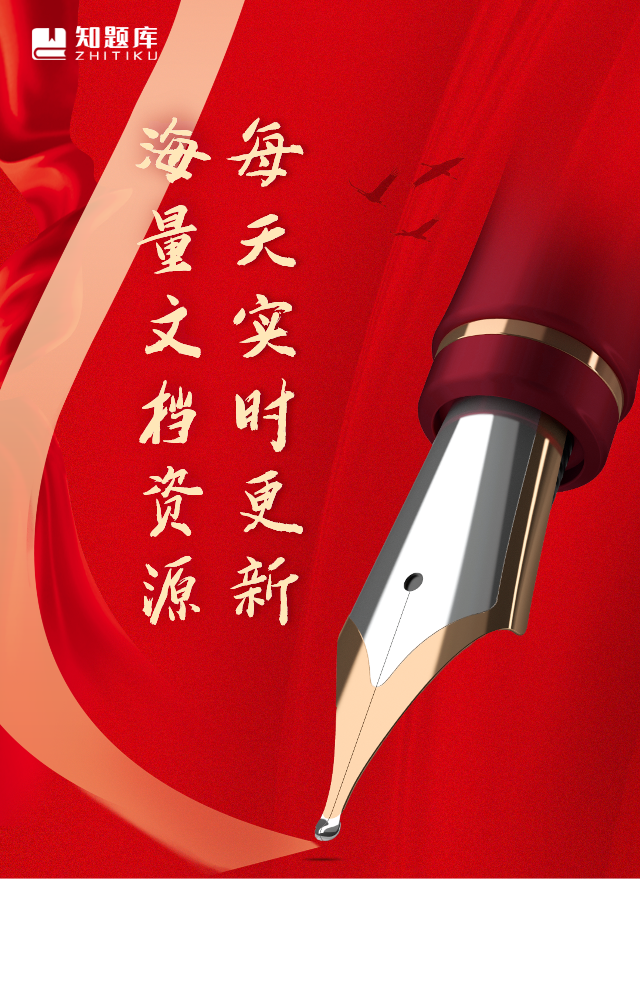亚开行-利用印度统一支付接口的经验教训促进亚太地区的数字化转型(英)-2024.4-8页
VIP专享
ADB BRIEFS
NO.
APRIL
2024
ISBN 978-92-9270-698-2 (print)
ISBN 978-92-9270-699-9 (PDF)
ISSN 2071-7202 (print)
ISSN 2218-2675 (PDF)
Publication Stock No. BRF240255-2
DOI: http://dx.doi.org/10.22617/BRF240255-2
Leveraging Lessons Learned from
India’s Unified Payments Interface
for Digital Transformation in
Asia and the Pacific
Jazira Asanova
Principal Operations Specialist
South Asia Department
Asian Development Bank (ADB)
Yonghwi Kwon
Financial Sector Specialist
(Digital Payment)
Finance Sector Group, ADB
Pratyush
Project Officer
India Resident Mission, ADB
John Owens
Senior Digital Finance Advisor
Digital Finance Advisory Services
In this publication, “$” refers to United States dollars and “₹” refers to Indian rupees.
KEY POINTS
• The Government of India’s
leadership in promoting
digital payments and the
balanced approach of
regulators helped the country
become a global leader in the
adoption of digital payments.
• Various initiatives, including
the Digital India program and
the BharatNet project, have
significantly helped India’s
internet penetration and
smartphone adoption.
• The Unified Payments
Interface (UPI) has
significantly impacted the
digital payment landscape in
India by promoting financial
inclusion.
• UPI helped reduce the use
of cash and checks in India
and the cost of financial
transactions, increase
the adoption of digital
payments by merchants
and consumers, and
improve the efficiency of
governmentservices.
• UPI has also supported the
growth of e-commerce and
other digital businesses.
Policies have supported the
growth of fintech companies.
• Developing interoperable
digital payment systems is
vital to addressing various
macroeconomic challenges,
especially financial inclusion.
Today, more than 330
banks and 25 apps use UPI,
including all third-party
payment providers.
INTRODUCTION
As digitalization rapidly transforms the financial landscape, lessons from India’s Unified
Payments Interface (UPI) offer valuable insights for the Asian Development Bank (ADB)
developing member countries (DMCs). Many countries trying to adopt digital payments
face multiple barriers. These include a lack of access to digital payments due to limited
payment infrastructure, low smartphone penetration rates, and expensive or poor internet
coverage. In addition, lack of clarity or poorly defined regulations often make it difficult
for digital payment providers to operate. Limited awareness of payment options among
consumers and small and medium-sized enterprises, a general lack of trust in these options,
and cost issues increase barriers to consumer and business adoption of digital payments.
India has tackled these barriers and challenges in unique ways but centered around the
launch of the UPI. UPI has had a significant impact on the digital payments landscape
in India, making it easier and faster for people to send and receive money. UPI has also
helped promote financial inclusion by making digital payments accessible to people of
all socioeconomic backgrounds.
India’s approaches, especially UPI, are highlighted in this brief, which aims to inform
DMC’s medium-term post-pandemic recovery plans and foster digital payment
innovation acrossDMCs.
ADB BRIEFS NO. 299
2
BACKGROUND
Like many countries, India faced several challenges and barriers
in adopting digital financial services. India launched the National
Electronic Funds Transfer system in 1998 to better support
payment infrastructure, enabling real-time electronic fund transfer
between bank accounts. This was followed by the launch of the
Real Time Gross Settlement system in 2004, which enabled
high-value electronic fund transfer between bank accounts
instantly; and the Immediate Payment Service in 2010, which
further expanded the fund transfer by enabling immediate
electronic fund transfer between bank accounts and mobile
wallets. The Aadhaar program was launched in 2010 by the Unique
Identification Authority of India, a statutory authority under the
Ministry of Electronics and Information Technology. Aadhaar is
a 12-digit unique identification number issued to all residents in
India based on their demographic and biometric information. The
program was launched to provide a unique and verifiable identity
to all residents in India, regardless of their socioeconomic status.
This was intended to help reduce fraud and corruption, improve
efficiency in the delivery of government services, and promote
financialinclusion.
In 2012, India launched the Aadhaar Payment Bridge System,
which enabled financial transactions to be linked to Aadhaar,
the national biometric identity database. Aadhaar Payment
Bridge System played a significant role in promoting access to
digital payments and financial inclusion in India. By providing all
residents with a unique and verifiable identity, Aadhaar made it
easier for people to open bank accounts and access other financial
services. This has been incredibly beneficial for low-income
and marginalized groups traditionally excluded from the formal
financial system. Prior to Aadhaar, many did not have proper
identification and were unable to fulfill the Know Your Customer
standards for financialinstitutions.
The Aadhaar-enabled Direct Benefit Transfer scheme has helped
reduce corruption and ensure that government subsidies are
delivered directly to the intended beneficiaries.
India Stack is the country’s digital public infrastructure and the
UPI functions as one of the components of India Stack and its
layers(Figure 1).1
UNIFIED PAYMENTS INTERFACE
Launched in April 2016, the UPI is a real-time payment system
developed by the National Payments Corporation of India (NPCI).
It facilitates interbank transactions through a mobile platform. UPI
allows users to transfer money between bank accounts and make
payments using a single identifier like a mobile number or a virtual
payment address without needing to enter or send bank account
details. It combines various banking features, seamless fund
routing, and merchant payments all into one platform. UPI has
since become India’s most popular digital payment system.
One of the key factors in the success of UPI is the consortium
ownership structure of NPCI, which is made up of banks and the
government. This public–private consortium helps NPCI play a
critical role in getting stakeholder support and instilling trust in the
system in the following ways:
Representation of all stakeholders. The ownership of NPCI is
spread across a wide range of banks and financial institutions,
representing major financial players of India’s economy. This
ensures that all stakeholders’ interests are considered when NPCI
makesdecisions.
Transparency and accountability. NPCI is a not-for-profit
public limited company incorporated under Section 25 of the
Companies Act. This structure allows NPCI to operate with
the flexibility and efficiency of a corporate entity while fulfilling
its not-for-profit objectives of developing and managing
the payment system in India. This ensures transparency and
accountability in NPCI’s operations.
Regulatory oversight. NPCI is regulated by the Reserve Bank of
India (RBI). This provides further assurance to stakeholders that
NPCI is operating in a sound and responsible manner.
Figure 1: India Stack and Digital Payment Components
Source: GST Suvidha Kendra. https://www.gstsuvidhakendra.org/introduction
-about-india-stack/.
1 India Stack is a set of digital infrastructure components that collectively aims to empower India’s digital economy and facilitate secure and efficient delivery of
public and private services to its citizens.
Aadhaar Enabled
Payment System
Bharat QR
Unified Payment
Interface
Immediate Payment
Service
eKYC
Aadhaar Pay
India
Stack
Leveraging Lessons Learned from India’s Unified Payments Interface for Digital Transformation
in Asia and the Pacific
3
2 Interoperable payment systems are those that can communicate and exchange data with each other, allowing users to make payments across different systems
seamlessly (See ADB. 2022. Payment Systems Interoperability in Asia. Manila).
Figure 2: Evolution of Payments Industry in India
2014 2016 2017 2018 2019 2020 2021 2022 2023
PMJDY scheme
launched for
financial inclusion
400+ million accounts
UPI Launch UPI 2.0 Launch One time
mandate
BHIM 2.0 Launch
UPI Autopay Launch
UPI Cross-border Launch
UPI crosses 2 billion
transactions/month
RBI allows offline digital
payments
ONDC Launch
e-RUPI Launch
UPI Lite and UPI 123 Pay Launch
Transaction limit increased
to $2,700
Demonetization
BHIM Launch
UPI crosses 100 million
transactions/month UPI crosses 4 billion
financial
transactions/month
“Har Payment
Digital” initiative
Payment enablement
for foreign tourists and NRI
UPI on Credit
Introduction of
P2PM
3.6 billion
6.9 billion
15.8 billion 35 billion
Digital Transaction Volumes in billion
72.4 billion
10.88 billion 24.2 billion 44.2 billion 83.7 billion
BHIM = Bharat Interface for Money, NRI = non-resident Indian, P2PM = peer-to-peer-merchant, PMJDY = Pradhan Mantri Jan Dhan Yojana,
RBI = Reserve Bank of India, UPI = United Payments Interface.
Source: National Payments Corporation of India.
NPCI also has several initiatives in place to promote trust and
confidence in the system, which include the following:
Security. NPCI has implemented robust security and risk
management frameworks to protect its systems and data. These
frameworks are regularly reviewed and updated to keep pace with
the evolving cyber threat landscape.
Consumer protection. NPCI has a customer grievance redressal
mechanism in place to address any complaints or concerns. This
mechanism is fair, transparent, and timely.
Consumer education. NPCI conducts regular awareness and
education initiatives to inform stakeholders about its products
and services and the importance of cybersecurity and fraud
prevention.
These initiatives help strengthen NPCI’s reputation as a trusted
and reliable organization, which is essential for its success in
getting stakeholder support and in playing a critical role in India’s
paymentsecosystem.
UPI is an instant payment system where transactions are
processed and settled instantly. UPI is also interoperable and
can transfer money between accounts held at different banks.
Payment service providers and fintechs can also use UPI in
collaboration with banks.2
UPI can facilitate both peer-to-peer (P2P) and peer-to-merchant
(P2M) payments. P2P payments are transfers between two
bank accounts. P2M payments are used to make payments to
merchants, such as at stores, restaurants, and online. Growth
in P2P and P2M payments has been rapid, and this has led to
versatility of UPI. UPI has helped in:
• reducing the use of cash and checks in India;
• increasing the adoption of digital payments by merchants
and consumers;
• promoting financial inclusion by making digital payments
accessible to people of all socioeconomic backgrounds,
thereby increasing formalization in the economy;
• reducing the cost of financial transactions; and
• improving the efficiency of government services.
UPI has also played a key role in supporting the growth of India’s
e-commerce and other digital businesses and lending products.
The BharatQR scheme created a common QR (Quick Response)
code standard for all payment service providers and merchants
accepting digital payments to further support the expansion of
digital payments, including UPI. With the launch of UPI in 2016,
the payments landscape in India has grown rapidly and has paved
the way to innovation in the payments industry (Figure 2).
HIGHLEVEL GOVERNMENT LEADERSHIP
AND DIGITAL ROAD MAP
The Government of India has played a key role in promoting digital
payments in the country through its various initiatives. Two of the
most important initiatives are the Digital India program and the
BharatNet project.
The Digital India program, launched in 2015 and led by the
Prime Minister to transform India into a digitally empowered
摘要:
展开>>
收起<<
ADBBRIEFSNO9APRILISBNprintISBNPDFISSNprintISSNPDFPublicationStockNoBRF2DOIhttpdxdoiorgBRF2LeveragingLessonsLearnedfromIndiasUnifiedPaymentsInterfaceforDigitalTransformationinAsiaandthePacificJaziraAsanovaPrincipalOperationsSpecialistSouthAsiaDepartmentAsianDevelopmentBankADBYonghwiKwonFinancialSecto...
相关推荐
-
华泰证券-债市分析框架—固收分析框架培训(固收首席)-总127页免费

 2024-04-14 641
2024-04-14 641 -
华宝证券-《2024中国金融产品年度报告:迈向服务化》-240320-344页免费

 2024-05-10 290
2024-05-10 290 -
退市及ST预警潜在风险个股名单20240524免费

 2024-05-24 999+
2024-05-24 999+ -
华泰证券-固收分析框架培训-基本面分析的道与术-230810-197页VIP专享

 2024-07-31 214
2024-07-31 214 -
长江证券-投资策略专题报告:周度思考,破净股估值提升利好哪些行业?-240928VIP专享

 2024-09-28 195
2024-09-28 195 -
兴业证券-反转逻辑系列一:继续做多中国股市:反转逻辑、三大主线-241001-14页VIP专享

 2024-10-02 237
2024-10-02 237 -
开源证券-金融工程定期:券商金股解析月报(2024年10月)-241007VIP专享

 2024-10-07 211
2024-10-07 211 -
国投证券-主线很重要!主线在哪里?-241020-30页VIP专享

 2024-10-21 178
2024-10-21 178 -
银河证券-大拐点,大机遇:底层逻辑重构,资本市场破局-241022-44页VIP专享

 2024-10-22 165
2024-10-22 165 -
华安证券-策略研究专题报告:哪些公司有贷款回购股票的动力(附标的)-241024VIP专享

 2024-10-25 384
2024-10-25 384
作者:村上
分类:综合
价格:免费
属性:8 页
大小:237.72KB
格式:PDF
时间:2024-09-03











